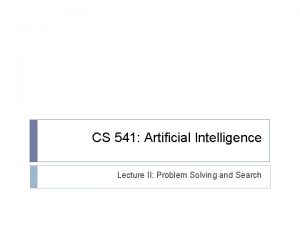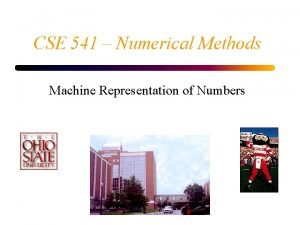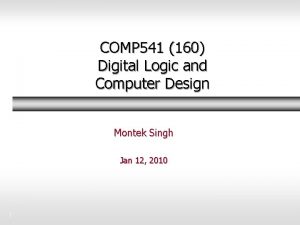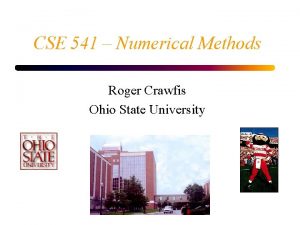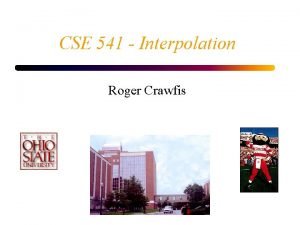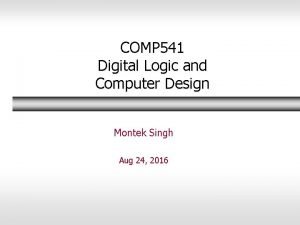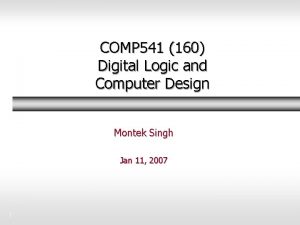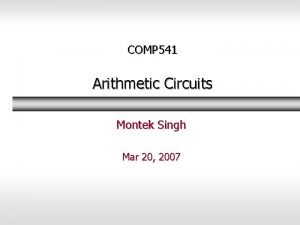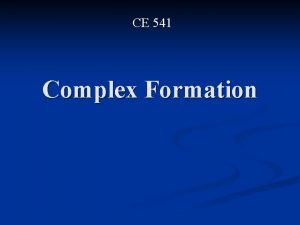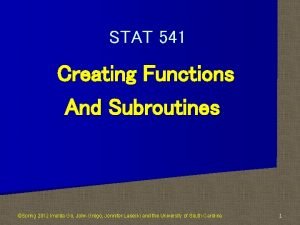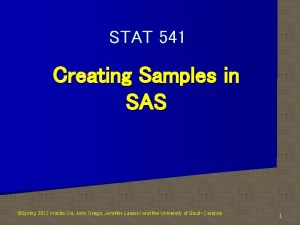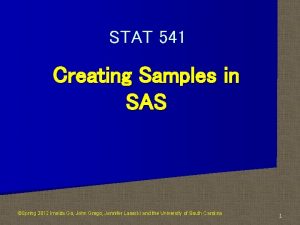STAT 541 th 4 Chapter 24 ed Creating








- Slides: 8

STAT 541 th (4 Chapter 24 ed. ): Creating Functions ©Spring 2012 Imelda Go, John Grego, Jennifer Lasecki and the University of South Carolina 1

Outline n n n About PROC FCMP Creating a Function Creating a Subroutine 2

PROC FCMP Syntax n n PROC FCMP statement must come first. The OUTLIB= option (which specifies a 3 -level name of an output package where the compiled functions are stored) is REQUIRED. The FUNCTION statement gives the name of the function (with one or more optional arguments) and indicates the type of value (character or numeric) that is returned by the function. The RETURN statement specifies the value that is returned by the function. The ENDSUB statement ends the function definition. 3

Using the Function n To use the function in a DATA step or in a PROC step, you must first specify the CMPLIB= system option. Here you specify the 2 -level name of the data set where the functions are stored. Then the function can be used in a DATA step or in certain supported PROC steps. 4

Creating a Subroutine with PROC FCMP n n n The SUBROUTINE statement in PROC FCMP names a block of code with parameters that can be used later. The subroutine is similar in purpose to a macro. The OUTARGS statements lists the output parameters that get updated when the subroutine runs. 5

Differences between Functions and Subroutines n n A function is an expression and returns a value, whereas a subroutine is a statement and modifies arguments. A function can be part of a SAS statement, whereas a subroutine is always used with a CALL statement. Function Subroutine Is an Expression Is a Statement Returns a Value Modifies arguments Used in a statement Used with CALL 6

Using Functions and Subroutines Created with PROC FCMP n n n Most SAS programming language features can be used similarly in PROC FCMP In the DATA step, you can call function and subroutines you’ve created just as you can call any built-in SAS functions and subroutines Created functions and subroutines can be used in some procedures, such as PROC GENMOD, PROC MODEL, PROC MCMC, PROC NLIN, PROC NLMIXED, and others. 7

Examples of Functions and Subroutines n n The “Reverse. Name” function works on character variables. See example of simple inverse subroutine. The “Win Percentage” subroutine can be used on several variables. The “Years Until Turning 65” subroutine works with date variables. 8
